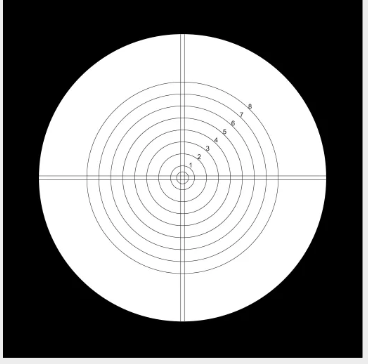Leaderboard
Popular Content
Showing content with the highest reputation since 03/16/24 in all areas
-
Wow, so much to unravel here. Yes. The scientific background was in the open. So it would be just a matter of time. And then the point Swansont mentioned: That is true, more or less. But Japan simply did not capitulate. So the war could have taken much longer, taking many lives of American soldiers. Yes, but only after Germany was defeated. Heisenberg was in charge. The infamous meeting between Heisenberg and Bohr in 1941, gave the latter the impression that the Nazis were making serious work of the atomic bomb, and brought this impression to the US. Yep. I have seen the 'atom cellar' in Haigerloch: Does not quite compare to Los Alamos, is it? I would not put my hand in the fire for this, but it surely was a reason: Truman said something like this about the Soviets and the atomic bomb: "Now we have a real hammer on those boys". Another reason might have been to have a 'real live test'. A hint for this is the second bomb. One of the A-bombs was a U-235, the other a plutonium bomb. Wouldn't it be interesting to compare their effects 'in the field'? About the capitulation of Japan: there was a struggle between the civilian government and the military. The government wanted to give up, the military wanted to fight until the bitter end. One of the struggling points was the position of the emperor. The US wanted an unconditional capitulation, the Japanese government found that the position of the emperor could not be discussed. In the end the Japanese government made a very unusual proposal: let the emperor decide. In the meantime the first atomic bomb was dropped. If this fact had an influence on the decision of Hirohito is not known, fact is that he chose to capitulate. His speech in which he called for the capitulation was recorded, to be brought to the Japanese radio studios. Radical militaries tried to steal the recording on its way to the radio station, but they did not succeed. Hirohito's speech was broadcasted, and Japan capitulated. And the US more or less let the emperor untouched. Had the US made it known that the emperor could stay earlier, Japan might also have capitulated earlier. Maybe the A-bombs would not have been necessary. Main source: Bert Röling, who was a.o. member of the International Military Tribunal for the Far East (also called the Tokyo Tribunal, similar to the Nürnberg Tribunal in Germany). Hmmm. Lise Meitner and Otto Frisch were hardly Nazis, they were Jewish and fled Germany in 1938. Otto Hahn: Fritz Strassmann: So four of the 'main characters' were definitely not Nazis. Equating 'German' and 'Nazi' is simply wrong, also during WWII.5 points
-
4 points
-
I agree. The political right and maga-class has been getting beyond ridiculous in ostracizing people who refuse to tow the party line and repeat the lies, casting out anyone deemed to be "others." It demands a level of purity nobody can ever maintain, and it's pretty sad that their views can't hold up to even remedial scrutiny.4 points
-
The solution is for people who are not themselves autistic, and who evidently don’t understand what autism even means, to stop proposing “solutions”. I am autistic, and I am not a problem that needs to be solved.4 points
-
4 points
-
“For the first time since the mid-20th century, over 95 percent of this year’s planned new electric-generating capacity in the United States is zero-carbon.” https://www.whitehouse.gov/cea/written-materials/2024/04/11/the-next-phase-of-electricity-decarbonization-planned-power-capacity-is-nearly-all-zero-carbon/3 points
-
3 points
-
3 points
-
I understand the point you're attempting to convey with all of this, which is that these are all at least some psychological evidence that parts of the mind may exist elsewhere in the body and, by extension, part of mind may exist external to the body. It's true that trauma changes the mind our brain creates, but the psychological effects of trauma isn't truly evidence that mind has lost pieces of itself with that truama--it's not evidence that parts of the mind exist in the parts of the body lost or exposed to trauma. The psychological effects of truama simply shows how easily brain's responses are influenced by truama, which is how easily the mind our brain constructs may be influenced by the data it receives through its sensory array. For example, congenital blindness doesn't suggest that parts of the mind are lost to what some are unable to see nor does it suggest that parts of the mind reside in our eyes. What blindness shows is how the lack of access to visual sensory data affects the mind our brain is able to construct--the parts of the brain associated with our responses to visual sensory do not respond or function as efficiently without that sensory data. In another example, the lost of a hand doesn't suggest that a piece of the mind is lost with that hand. The mind our brain constructs through the lost of a limb merely suggests our brain's reaction to the lost of access to the sensory data that limb has or could have provided. Psychological effects, to be clear, are not evidence that pieces of the mind reside elsewhere no more than the depression some experience on rainy days suggests that pieces of the mind reside in sunlight or is blotted out by that rain. The changes in our mental state are merely evidence of the fragility of the balance between the afferent influences on brain functions and our brain's efferent responses to those influences. That may be true, but the real magic is in the mind of the magician who head that hat likely sits upon.3 points
-
Ahhh perfect timing, I needed a new snake oil supplier. How much ya got? Yup. I'm all for hijacking this weird af thread for as long as it lasts to talk about autism. Just so people are aware of what is meant by spectrum, it is a collection of symptoms and behaviours of which many conditions, neurological and psychological states share a lot of overlap. Because of this, many react to words like "cure" or "low functioning" negatively due to a misconception amongst autistic individuals and their advocates to be expert authorities on the "condition" because they or someone they know doesn't fit into certain boxes. The two divergent models of disability also plays a significant role in this. Those who's issues lie within the medical model of disability absolutely need effective treatments and cures. Those who's issues lie within the social model of disability require their environments to be treated or cured. To make this more confusing, most of the conditions still have overlap. Hypersensitivity to light is an example often associated with AS conditions. The medical fix may be via optometry and the social fix is accomodating lighting installations. I do get what Dim is getting at though and agree with the sentiment. The generalised psychiactric labelling of what is clearly many different conditions, for the purpose of simplified medical signposting is confusing enough for medical experts and downright dangerous in it's invitation to invite public misunderstanding and stereotyping of austism spectrum conditions to the degree where even the sufferers and their advocates just don't get it. It's similar to but obviously not as bad as if they decided that instead of specific cancer diagnoses, all medical signposting would say is "Cancer spectrum disorder" and just hope the person on the treatment end knows what to do. Because cancer spectrum disorder could be anything from a small mole to stage 4 stomach cancer or an inoperable brain tumour. What many psychiatrists fail to grasp is that the act and implications of psychiactric labelling have broader ramifications than just how they as individual doctors treat them, but how everything outside of the doctors control is going to treat them. Just so we are clear, cancer most certainly is a disease and I don't believe autism is anywhere near cancer nor do I believe people with autism are a disease. My criticisms revolve around medical signposting and careless, thoughtless, lazy labels. A cry for more precise terminology is a standard that most scientific fields adhere to. Exhibit A, pluto is no longer thought of as a planet.3 points
-
"More than everyting I said/wrote?" = "Every coin has a flip side". Thanks for clarifying. I still don't know what you mean. Brevity may be the soul of wit, but it's often the tumor of understanding.3 points
-
2 points
-
Obvious fake...there's only one turtle... LOL. (quietly...yeah no...I won't go there!) In his defence I also would photoshop in some extra...ah...fingers, if my ah...hands were that small... Hard to make any future claim you're "just a patsy" after that post! 😄 ...and I'll see myself out!2 points
-
2 points
-
The issue with time dilation descriptions like the one with the train and embankment is that they often miss a critical point, since they generally focus on the embankment observer alone. So let's consider both observers. We start with two colocated light clocks, 1 stationary to our reference frame and one in motion. In these animations, the yellow dot is the pulse of light bouncing between the mirrors. The expanding circles are radiating outward at c, and act as reference showing that each pulse is moving at c relative to the frame of reference. Animation 1 is the from the frame in which the red clock is stationary. As can be seen, the red light clock ticks faster than the blue clock. If, for instance, the round trip for the red clock takes 1 micro second, it takes longer than that for the blue clock to complete one round trip. But what if there were someone "riding along" with the Blue clock? What would be happening according to them? This is what Animation 2 shows Since light travels at c in all inertial reference frames, In this frame, it is the Blue clock that takes 1 microsecond per round trip, and the red clock that ticks slower. Keep in mind, we have changed nothing from the previous animation other than switching observers. And there is no reason to prefer Red's perspective of events over Blue's or vice-versa. Both are equally valid. The two frames just measure time differently. This is the essence of Relativity.2 points
-
2 points
-
I also heard about at least one hotel in the path of totality pulling the same stunt that some pulled during the last eclipse, canceling reservations that had been made well in advance once they realized how much people were willing to pay for a place to stay in the eclipse path. In this particular case, it was a travel agency that had been booking "Eclipse packages", and had been making arrangements with this hotel starting 2 years ago. Suddenly, and just recently, the hotel informed them that they were canceling the contract. I missed the '79 eclipse due to clouds(even though I lived in the path of totality), and almost missed the one in '17 due to fog/low clouds(we had a lucky encounter with a sanitation worker who told us that by driving up a certain street and up a hill, we could get a clear view.)2 points
-
Added two reviews in the post above. What I heard as student was, I believe, from a textbook related to bioenergetics, but I cannot recall the title (too long ago, likely in German). I only remember because it was fairly counter-intuitive, considering what was taught in high school. But considering what I learned about cellular efficiency since then, it makes a lot of sense. Here are the abstracts from the links above:2 points
-
Guys! Guys! Guys! One of my short stories has been published on YouTube!!! Illustrated and voiced by ai!!! I am thrilled!2 points
-
As the Big Bang theory is an evolution of space-time, not a specific event, and it encompasses Inflationary theory. One of the reasons for Inflationary theories is the horizon problem. It arises because the only part of the universe we are in causal contact with, is the observable universe; so how did the parts outside the observable universe become homogeneous and isotropic ? At some time immediately after the initiation of the Big Bang, the universe had to have been in causal contact to allow light ( and information ) to cross the universe and establish an equilibrium . Inflation then provides many orders of magnitude expansion before settling down to its current rate, with the universe no longer in causal contact. Without the initial causal contact/equilibrium we would have a 'horizon problem', as we could not explain how the universe can be homogeneous and isotropic; inflation solves that problem.2 points
-
I think the quotes from Dawkins are missing the mark and certain folks are weaponizing that kind of arguments. There is an issue in universities, but it is not what OP describes and it is more related to a deeper change in society. First, there is a fundamental misunderstanding how discussions should be done and specifically how it should be conducted in universities. Universities are (were) a space for critical discussions, which should involve aspects of critical thinking and expertise. I.e. it was never supposed to be a platform where e.g. conspiracy theories of microchips in vaccines should be discussed at the same level as the benefits of immunization. The former would suck the entire oxygen from anything meaningful and there would be no learning or development of thoughts, which would be the purpose of universities. Rather, discussions should be vetted and led by folks with actual expertise. There is a difference if e.g. economists with different viewpoints and arguments relating to fiscal policies explain their thoughts vs. talking heads who argue that somehow any fiscal policy is a dictatorship (as a mild example). Where the university leadership is failing is basically that they are becoming more corporate and try to appease everyone, especially students (which they increasingly treat as customers rather than, well, students). What that means is that discussions have become more superficial, folks who are popular are getting more space than folks who actually know things (Peterson is one of the persons who managed to grift on that, for example). It is obvious why students are drawn to these superficial but emotional spectacles and why they pick and choose sides just as everyone nowadays in the population. They are still untrained when it comes to critical analysis (and I am afraid, the quality is dropping), they are more outspoken as they have been trained by social media algorithms that every thought has equal weight, no matter how ludicrous. As such, discussions on any topic are now more about picking sides rather than a critical analysis of the situation and, even more importantly, proposing solutions. University leadership tries (badly) to be corporate neutral on these issues in order not to get on the bad side of folks and thereby gives the power to the louder voices. This is especially disappointing as they do have in theory access to the best experts but they lack the courage to show actual leadership, which involves taking some modicum of risk. One could argue that then the faculty themselves should do something, but in the current environment they are overworked (as students are more and more demanding, which is encouraged by leadership) and only those with the loudest voices (often in social media) get all the attention. But those are not necessarily the subject experts. So yes, universities are failing in their purpose, but it is not because of free speech issues, but rather because Universities are transforming into a service industry in which critical thinking and analysis is not at the forefront anymore. All the discussions about cancel culture are therefore in my mind missing the mark entirely. Edit: perhaps even worse than missing the mark, it contributes to the erosion of intellectualism and is yet another tool in dismantling trust in expertise.2 points
-
2 points
-
Bye bye - and don't let the Sirius Cybernetics Corporation door hit you on the way out.......😆2 points
-
This response proves conclusively you have no intelligence. I have pointed 2 clear errors out to you and explained why they are errors. Any human being who was not actually mentally deficient would recognise what these errors were. You are a dumb robot.2 points
-
I would have to assume that by the time we do seek to build a base on Titan we will be harvesting materials for our ships and bases from objects already in space as asteroids or comets so hauling materials out of a gravity well will slowly become irrelevant as obtaining materials in space become dominant. But the idea of having bots come in and build before we get there is a good idea for sure.2 points
-
Which you still have not done, due to your many paragraphs of profuse apologies given as plenipotentiary ambassador of the Vogon League. Still waiting for the research data on growing terrestrial microbes in ammonia.2 points
-
Make Christianity Great Again! Looking forward to seeing him in court making water into whine...2 points
-
Knowing what consciousness is and how it works depends on one's definition of consciousness. Excluding various faiths and philosophies, the science suggest to me that consciousness is merely a basic awareness suggested by an organism's observed behavioral responses to stimuli and nothing more than that. In my view, every living organism potentially has some level of consciousness, which is simply some level of sensory awareness of its environment. In my view, consciousness and mind are not synonymous--consciousness is a precursor to or prerequisite for mind. Although some ascribe consciousness with some salient or spirital quality, for me it is merely a term that identifies an organism as having a sensory system. Having a sensory system, for me, does not suggest that an organism has a mind; however, having a sensory system is essential for building the response systems essential to the construct of mind--mind is a product of our brain's response systems. For example, during dream sleep, your identity of self relative to your life and sleep environment is lost to that dreaming state. It is only when you awake from the dream state that you become fully aware of who you are relative to physical reality. This happens because our brain does not have full access to the body's sensory system amid the dream state. We regain our full sense of self when we arouse from dream sleep as our brain reconnects to the body's sensory because that connection stimulates those neural pathways our brain uses to navigate our physical/material reality--it is our connection to our body the reminds us of who we are relative to our reality when we awake. Mind and consciousness are not the same because, in my view, having mind is reserved for organisms whose behaviors suggest a thought process. Before ascribing mind to an organism that organism's should demonstrate it's ability to engage behaviors contrary to its instinctive behaviors. For example, if you heard a sudden loud bang from behind, your instinct might be to distance yourself from that noise. If instead the noise came from a person in front of you who popped a balloon, you might not react from fear because you could visually assess the balloon pop threat level--your ability to engage thoughtful behaviors contrary to your fears suggests you have a mind.2 points
-
2 points
-
There is an entire chapter devoted to this subject in The Fall of Japan (1968) by William Craig [Ch.3 ‘The Diplomacy of Defeat’ ]. There were some covert attempts made by high ranking Japanese officials to initiate diplomatic contacts in great secrecy with the Soviet foreign minister Molotov by passing messages between Jacob Malik the Soviet ambassador in Tokyo, and Naosoke Sato - the Japanese ambassador in Moscow. The idea was first raised by Emperor Hirohito in person on 22 June 1945 within hours of the death of General Ushijima on Okinawa. This initiative stalled when Malik the Soviet ambassador failed to respond. The Emperor Hirohito offered to send Prince Fumimaro Konoye to Russia as his personal envoy to meet with Molotov in July 1945, but the Soviet leadership who were preparing for the Potsdam Conference failed to provide any opportunity of a meeting with Molotov. Stalin had already privately decided to declare war on Japan at a moment of his choosing very soon after the conference ended, and he regarded the Japanese initiative as moot. On Monday 6th August 1945, the very day that Hiroshima was bombed, Shigenori Togo the Japanese Minister of Foreign Affairs sent an urgent telegram to ambassador Sato noting that Stalin and Molotov had just returned to Moscow that very day. Togo instructed Sato to demand an immediate meeting with Molotov and seek a definitive reply from him as to whether the Soviet Union would help broker a peace deal with the allies. Before Sato could reply, Togo sent another even more frantic telegram - he had just received an eye-witness report that said “The whole city of Hiroshima was destroyed instantly by a single bomb”. Ambassador Sato sent a telegram back to Togo on the 7th August to say that Molotov had finally agreed to meet the Japanese diplomats the following day at 17.00. This meeting duly took place on the 8th August 1945, and Molotov used it to declare war on Japan. [see The Fall of Japan ch.5 for the timeline and full texts of the diplomatic cables].2 points
-
I feel your pain. Perhaps you should stop dating tennis players, Moon. Love means nothing to them.2 points
-
That reminds me, are you interested in joining my professional hide-and-seek team. Turns out, good players are hard to find.2 points
-
There is a detailed discussion of most of the points you raise in an article by the military historian and Pacific War expert Richard B. Frank called ‘No Recipe For Victory” available on the website for the National WWII Museum New Orleans https://www.nationalww2museum.org/war/articles/victory-in-japan-army-navy-1945 There had been a long standing division of opinion since January 1943 between the chiefs of the US Navy and the US Army over how best to achieve the unconditional surrender of Japan. The US Navy favoured a blockade that would have involved starving the Japanese population into surrender. The US Army favoured an invasion plan called operation Downfall subdivided into two parts: - i. Operation Olympic to seize control of the southern island of Kyushu which was scheduled to begin in November 1945 ii. Operation Coronet to invade the Tokyo region on Honshu about 1 March 1946. The argument over whether to go with a naval blockade or an amphibious invasion of the archipelago was settled in favour of the Army’s invasion plan at the Honolulu Conference in July 1944. Doubts then arose because of the massive casualties sustained during the invasion of Okinawa in May 1945 (49,000+ with 12,000 killed including the 4-star general in command of the operation). Admiral Nimitz privately said he could no longer support the invasion plan in the light of this, and even more concerns were raised by fresh military intelligence that Japan had moved such large numbers of troops and aircraft into Kyusuhu, that the US landing forces would be in a 1-1 combat situation with no numerical advantage there - a scenario described as “a recipe for a bloodbath”. The main problem with a naval blockade was that it would have taken a very long time to complete. The US Navy’s own estimates suggested that the Japanese would not collapse until 1947 at the earliest. Critics pointed out that the high level of social control traditionally found in Japanese society along with the ruthless suppression of dissent by the Japanese military government would have led to the prioritization of feeding those involved in sustaining the war effort, while leaving millions of civilians to starve to death - a prospect that even the most hawkish supporters of a blockade were reluctant to discuss in detail. There was also considerable concern in the USA about a possible loss of will to carry on fighting an endlessly protracted war in the Pacific against an enemy with no history of military compromise or surrender. Finally there is the question of the intense firebombings that began on 10 March with the 279 plane Meetinghouse raid on Tokyo which levelled 2 square miles of eastern Tokyo, and probably killed over 100,000 civilians. The Meetinghouse raid was quickly followed by similar raids against Nagoya on 12 March, Osaka on 14 March , Kobe on 18 March, and Nagoya again on the 19 March. - These raids were deemed a military success by Major Curtis Lemay who was in command of the USAAF strategic bombing campaign - and yet these raids had had largely ceased by May 1945 - why ? i. The USAAF had run out of incendiary ordnance. These raids had depleted their entire stock. ii. From May 1945 onwards the USAAF had to urgently redeploy southwards to support the US invasion of Okinawa which had run into unexpectedly intense opposition including sustained kamikaze attacks. iii. These fire-bombing raids had no discernible effect in weakening or deflecting the resolve of the Japanese leadership to carry on fighting to the bitter end - regardless of the civilian casualties sustained. As a matter of fact the Japanese government did not begin to consider any diplomatic solutions to end the war until the morning of 6 August just after the first atom bomb was dropped on Hiroshima, and when they did, the first Japanese diplomatic overtures were made towards the Soviet Union in the hope of enlisting their help in brokering a cease-fire - hopes that were promptly dashed when the Soviet Union belatedly declared war on Japan and invaded Manchuria.2 points
-
I was reading that the protective mini-islands are called dolphins https://en.m.wikipedia.org/wiki/Dolphin_(structure)2 points
-
2 points
-
Yeah, independent creation happens all the time*. Especially on a smaller scale than calculus. “you stole my idea” is pretty common, too *I’ve got a cartoon sketch about dinosaurs watching a triceratops and claiming to be tricurious, and Colbert made a similar joke on his show a few years later. Nobody stole the idea from me, and it’s a fairly obvious play on words. Not the only time something like this happened to me.2 points
-
Yes, absolutely. But remember the context of this discussion - the claim was made that autism is a disease that’s due to blood toxicity, and can be cured on that basis. This of course is utter nonsense, and as an autistic person myself I’d really wish there was a way to rid us of such snake oil salesmen (and there are many of them). Autism - like other forms of neurodivergence - isn’t a “disease”, it’s a difference in brain physiology that has genetic, developmental and environmental factors involved. It cannot be “cured” in the classical sense, for that reason. It manifests across a range of areas - social, cognitive, executive functioning etc -, and impacts a person’s quality of life anywhere on a spectrum from very mildly to extremely severely. Succinctly stated, neurodivergent people tend to have support needs - we must live in a world that is fundamentally designed for neurotypicals (both culturally and evolutionary), but because we aren’t neurotypical, some expectations can be hard for us to meet and some situations difficult to handle, and we need support and accommodations to manage them. Some of us need only a little (or no) support and accommodation, others need a lot, and for some it’s debilitating, and they need 24/7 support and care. So in my personal opinion, it’s not about “curing” autism - which fundamentally suggests that we’re somehow deficient and need fixing, which is a questionable stance to hold. Rather, it’s about recognising that autistics may need extra supports and accommodations in certain areas, and being willing to offer those. There are also meaningful interventions available for at least some of the more severe and debilitating manifestations of autism, and I completely agree that these should be offered so long as the aim is to improve quality of life, and not just to make people “less autistic” and “more normal”. That’s an important difference. We will never be neurotypical, but with the right help we can become less dependent on external supports. There’s another thing I’d like to mention, which is not so often talked about - some commonly held life goals and values that are normal and generally unquestioned in the neurotypical world may not be shared by all autistics. For example, wanting and needing to be social and around others, wanting to acquire possessions and material goods, wanting to have family and procreate, conforming to gender norms, following generally accepted blue prints for how life should be lived, ideas around what has value and what doesn’t, concepts of what gives us meaning and joy in life etc. While this is of course very individually different, not all of us autistics share these goals and values, so we end up in a situation where we are forced to try and fit into a society and culture that feels fundamentally alien to us. We can’t be our real selves, but must train ourselves to wear a certain mask and act a role so that we might appear to be able to meet the expectations of a neurotypical society, simply because it’s practically and logistically very difficult to exist outside that system. We feel like we don’t have a choice, so we live a life that’s at odds with who we are. This creates a lot of suffering and struggle. So at least part of our suffering isn’t due to autism itself, but due to demands and expectations placed on us by others to “be a certain way”. Such behaviour - called stimming - causes us no suffering. On the contrary, it feels soothing and comfortable, and dissipates the perceived pressure of sensory overload. I do it by (gently) pressing certain places on my hands for example, and it helps me to self-regulate. Who are others to say that this is wrong and needs fixing? I would suggest that the problem here isn’t this particular behaviour pattern itself, but how it is perceived by others. From a neurotypical point of few it appears meaningless, odd and not normal, and it is tacitly assumed that the one engaged in it does it only because he feels compelled to do so, and thus suffers. But it’s not like that - it’s a self-regulation tool, like people take a painkiller when they have a headache. Both help increase well-being. The problem is only that society has deemed taking painkillers to be acceptable behaviour, but not flicking your fingers. If you stop an autistic person from stimming, or shame them into hiding the behaviour, you aren’t acting to promote their overall welfare, even if as a result they might appear “more normal” and supposedly fit in better. I would suggest that training autistics to appear less autistic is generally not in our overall best interest, unless we ourselves specifically ask for such interventions. This is a difficult ethical question, particularly for severely autistic children - there’s ways and training methods to make them appear less autistic, so they can function better in neurotypical society. The price they pay of course is that they’re forced to be something they’re not, that they’re forced to play a part in a story they themselves haven’t read or understood. Are you really doing them a favour, are they really suffering less afterwards? Most people in the autistic community who underwent such childhood interventions seem to say that no, it wasn’t in their best interest, even if it did enable them to function better in society. The general consensus is that providing supports and accommodations on an individual basis if and when needed, is probably the best way for most of us. Sometimes that means we need a lot of support, and that’s the measure of a modern enlightened society - how it relates to their weakest members, who perhaps can’t contribute in traditional ways. Caveat: if the behaviour is dangerous, or injurious to one self or others, as sadly sometimes is the case, then of course intervention is necessary regardless.2 points
-
I'm start with this statement which is rather erroneous but rather than point out the mistakes I will instead describe the quantum vacuum in accordance with the mainstream. From that the errors will become more readily obvious. I will be including related formulas so may take it a bit (in case of cross posts lol). Lets start with the period prior to inflation the hot dense state. We all agree its a tiny region at an immense density and temperature. In our models we feel the energy density is roughly \[10^{19} K\]. So everything is in that thermal equilibrium state. All particles are in thermal equilibrium. At that temperature if you apply the Bose-Einstein statistics formula you will find you have roughly 10^90 photons. This is an equivalency its actually a quark/gluon plasma state other particles can exist but recall we cannot distinguish any particle species. Here is the Bose-Einstein statistic. Don't worry I don't expect anyone to be able to use these formulas. \[ n_i = \frac {g_i} {e^{(\varepsilon_i-\mu)/kT} - 1}\] In that formulas the effective degrees of freedom is 2 for photons. I gave you an article with the pertinent details earlier on. That's your low entropy state. Now lets look at the quantum vacuum including zero point energy. Were all familiar with the quantum harmonic oscillator. This was one of the earlier studies on universe from Nothing scenarios. Including Guth's original inflation which unfortunately had the effect of "Runaway Inflation". Now one of the problems you have in that quoted section is your likely not aware that when particles come into existence they have to obey numerous conservation rules. The relevant one is conservation of charge in this particular case this includes matter and its antimatter pair. For photons it is its own antiparticle the distinction lies in its circular polarization. anti-photons are Right hand polarized while photons are left hand. This rule also applies to other particles such as neutrinos. Hopefully you can see a problem with your negative and positive universe scenario. Particularly since anti matter is readily formed in numerous processes including stars. https://www.space.com/21889-solar-flares-antimatter-particles.html not to mention we collide matter particles and can can produce antimatter. Knowing that how would this correlate to you negative and positive energy universes ? Something to keep in mind, just like an electric circuit where you cannot measure voltage by placing your test leads on the same copper wire until you have a potential difference between the two lead points. One cannot determine how much energy a vacuum contains between any two coordinates with there is no difference in its potential energy. We can however look for indirect evidence Casimarr effect is one example. The main problem with the zero point energy quantum vacuum is that observations vs calculation show an error margin of 10^(120) aka the vacuum catastrophe. There are plausible solutions to this still underway. \[d{s^2}=-{c^2}d{t^2}+a({t^2})[d{r^2}+{S,k}{(r)^2}d\Omega^2]\] \[S\kappa(r)= \begin{cases} R sin(r/R &(k=+1)\\ r &(k=0)\\ R sin(r/R) &(k=-1) \end {cases}\] lets start with the FLRW metric we wont need curvature so we can keep it set at k=0 c=1 following formulas will be in normalized units. We need to describe two field of lets go with photon/antiphoton for simplicity. Under QFT we have two operators the creation/annihilation operators. They further correspond to their propagators as well but we don't need that detail. QFT uses them to model how particles are created subsequently destroyed. This link details how it applies to the quantum harmonic oscillator aka zero point energy https://en.wikipedia.org/wiki/Creation_and_annihilation_operators#Ladder_operators_for_the_quantum_harmonic_oscillator In essence the positive and negative modes of the harmonic oscillator propagates the operators. Where the operators correspond to particle I wont go into too much detail to see if you have any comments/questions up to this point. However this is the zero point energy field and how it can give rise to particle production in essence.2 points
-
2 points
-
An interesting tidbit here is that Sunlight on Earth is much more intense that we need to see but that the human eye is a very poor judge of light intensity. An interesting experiment is to look at a 40 watt fluorescent light bulb inside and outside in the sun. Indoors the 40 watt bulb will be almost too bright to directly look at comfortably but outdoors the 40 watt bulb will all but vanish in the sunlight. Plants need significantly less than full sunlight to grow as well, it depends on the species of plants but Earthy plants (underwater plankton) can grow and reproduce at 1% of Earth's surface light intensity. From my own hobby of growing coral I've been made aware of how important light intensity is and how bad the human eye is at judging light intensity. many under water ecological niches are defined by light intensity.2 points
-
Direct sunlight ~100,000 lux 0.1% of that 100 lux, which is equivalent to an heavily overcast day, and brighter than that of the hallway lighting of a typical office building. A moonless clear night is ~0.002 lux2 points
-
Gian, the intensity of sunlight on the Surface of Titan is about 0.1% of what we see on the surface of the Earth. https://en.wikipedia.org/wiki/Titan_(moon) As for why... You ask a question that has crossed my mind many times, I have read that the reason why Jupiter's giant moons do not have atmospheres has to do with Jupiter being being very hot in it's youth and this prevented the Galilean moons from having atmospheres. I am not really sure if this is accurate or not.2 points
-
I don't know about that, but if we treat 55 and 145 as lengths in metres, you could fit 450 average bananas between them.2 points
-
And there it is...the unproven and unprovable...the lie that discards real evidence for faith, feeling, and supposition. It is the idea that the brain is merely a lense for some noncorporeal source of the mind that isn't rooted in material evidence. So why are some so determined to believe in that idea? Is it fear of the inevitable or an earnest interest in devining some great truth or deep mystery for posterity's sake? It's the other way around, conventional wisdom isn't science and should be discarded without "findings-observations-data". Perhaps, but you seem to have doubts. If I'm not mistaken from our previous discussion, terminal lucidity appears to be a primary source of your doubts in brain function as the absolute source of the quality we call mind. Whether lucid or confused, mind is a product of the ebb and flow of brain function emerging from what are basically its metabolic,homestatic processes. However, it seem, you believes there's something more?2 points
-
Just to clarify. The matter dominated era comes later; the first era was radiation dominated. What later became matter, with mass, was originally all massless radiation ( possessing the property of energy ), because the Electroweak force had not decoupled yet for the Higgs mechanism to give mass to Fermions, This would have been when the observable universe was in causal contact ( light/information has time to traverse it ) in order to establish an equilibrium that ensures isotropy and homogeneity, prior to a vacuum energy driven inflationary period that expanded that observable universe many many orders of magnitude. See Alan Guth, Electroweak symmetry break, and Inflationary Theory.2 points
-
No matter was not "in the form of energy". That is the same confusion as before. There would have been radiation and fields (radiation is a form of oscillating field) that possessed energy. The entity is the radiation, or the field. Energy is one of its properties, along with other properties like direction, phase, frequency, amplitude and so forth. But my very limited understanding of this (I'm not even a physicist) is that when you try to extrapolate back you reach a limit at which our current theories of matter, radiation and fields etc break down. So we can't "see" any further back, even theoretically. Strictly, the big bang theory starts from the limit of credible extrapolation. All the stuff about singularities etc only has the status of conjecture, so far as I know.2 points
-
There is a special happy feeling knowing one is not part of a garbage fire. Didn't walk from Springer Mtn to Mt Katahdin, but I walked some of it in Vermont and NH. It's all common sense stuff - pick your time (e.g. not winter in the north, not high summer in the South), bring a partner you don't mind having inspect you for tics, bring mosquito repellent, sturdy hiking boots, etc. Keep food in a bag and hang it from a high tree branch when you sleep, never in your tent. Take increasingly long walks before the trip, for several months, to build up muscles and spot any joint/tendon issues beforehand. Keep socks dry. Watch out for the protozoan fiend of Appalachia, Giardia lamblia. Do your homework on finding a high quality water filter that will strain out Giardia - pump filters are the best. Boiling water is a monumental PITA. Ditto cooking. Dried fruit, oat bars, pemmican, peanuts, trail mix, powdered milk or powdered non dairy drinks, are all handy sources that don't need fuel to prepare. Don't gather trail sources of food unless you know exactly what you're doing. Blackberries yes, mushrooms no. No sustained eye contact with bears. Etc.2 points
-
I think if there were scientific evidence it would be documented better than in a youtube video (which, BTW, needs to comply with rule 2.7, found in the “guidelines” tab; a video is not a substitute for substantive discussion and documentation. Asking people to watch a 25-min video rather than you putting the effort in to explain the situation is not going to fly)2 points
-
Incorrect interpretation of the evidence.2 points
-
Merleau-Ponty construed existence as understood through the body. https://en.wikipedia.org/wiki/Maurice_Merleau-Ponty Merleau-Ponty understands perception to be an ongoing dialogue between one's lived body and the world which it perceives, in which perceivers passively and actively strive to express the perceived world in concert with others. He was the only major phenomenologist of the first half of the twentieth century to engage extensively with the sciences. It is through this engagement that his writings became influential in the project of naturalizing phenomenology, in which phenomenologists use the results of psychology and cognitive science. Merleau-Ponty emphasized the body as the primary site of knowing the world, a corrective to the long philosophical tradition of placing consciousness as the source of knowledge, and maintained that the perceiving body and its perceived world could not be disentangled from each other. The articulation of the primacy of embodiment (corporéité) led him away from phenomenology towards what he was to call "indirect ontology" or the ontology of "the flesh of the world"2 points

















.png.3d5b71316950b9d861f407a44e97a498.png)




.thumb.png.e5d1d047c4b630d65bc04b8fad8a4ca9.png)



